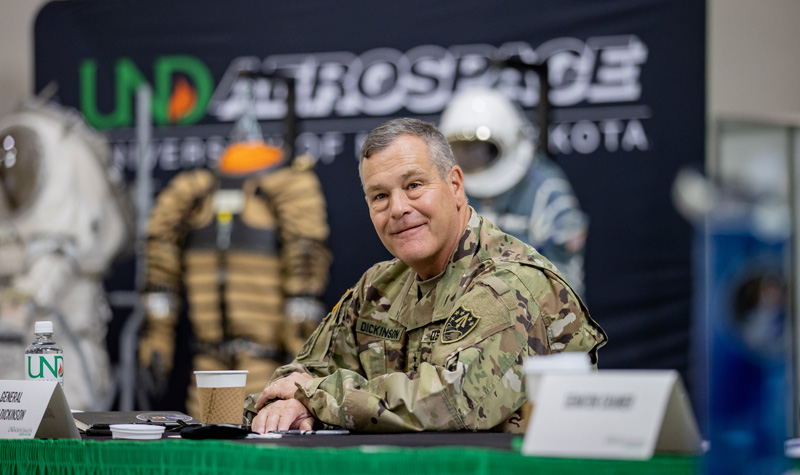Fifteen UND Aviation majors chosen for career path partnership with U.S. Customs and Border Protection (Kaylee Cusack – UND Today 12/14/17)
At least 15 of UND’s leaders in action now have a flight plan to the skies above our national borders.
Announced in late October, the Air and Marines Operations (AMO) Pathways Program garnered more than 60 applications from UND Aviation sophomores and juniors interested in a career with U.S. Customs and Border Protection (CBP). Fifteen were selected to take part in the program – pending a thorough background check – and their names will be released later this month.
The AMO Pathways Program is exclusively available to aspiring UND pilots in its inaugural year, the brainchild of discussions between CBP and U.S. Sen. John Hoeven, R-N.D. Those who were chosen will be hired as federal employees (either part-time or full time) to train to become airborne law enforcement officers while they finish their UND education. Their CBP preparation will include assisting with operational mission plans and working closely with state and local law enforcement.
Upon graduation and completion of at least 1,000 flight hours (500 fewer hours than CBP typically seeks), the trainees will be hired as CBP Air Interdiction Agents, a job that will have them conducting border security from the air.
“What makes this partnership so well-suited between UND and CBP is the fact that CBP flies the three types of platforms in which UND trains students – helicopter, fixed-wing and UAS,” said Beth Bjerke, associate dean of the John D. Odegard School of Aerospace Sciences. “The Grand Forks CBP branch flies all three platforms, so the students partaking in the program will have exposure to the operations while completing their degrees. This helps bring in real world experience to their education that they won’t be able to attain just by going to class.”
David Fulcher, deputy director of air operations for the CBP’s National Air Security Operations Center in Grand Forks, said the AMO reached out specifically to UND to begin the Pathways Program for several reasons.
“First is the longstanding relationship between UND and the National Air Security Operations Center in Grand Forks (NASOC-GF),” Fulcher said. “UND and NASOC-GF have a cooperative research agreement in place and have collaborated on research and training related to unmanned aircraft for the past eight years.”
Fulcher added that AMO employs several graduates of the UND aviation program already in the Air Interdiction Agent and Mission Support job series.
“We have seen the quality and professionalism of the students and staff of UND and know the international reputation of their aviation program,” he said.
Opportunities soar
Ken Polovitz says his job as assistant dean of UND Aviation Student Services has never been easier.
As a man who has helped connect students with internships, co-ops and jobs in the industry for more than 30 years, he sees a national pilot shortage – brought on by a wave of pilot retirements – as a way to create a vast menu of opportunities like the AMO Pathways Program.
“Everybody is looking for qualified pilots. They’re scrambling,” Polovitz said. “Just about everyone who needs pilots is developing a pathway program, so this idea isn’t new. It’s just that this time it’s the federal government, and they are mentoring students with pay while they’re in school.”
In addition to money and mentorship, the recruits of the AMO Pathways Program will get a flavor of public service that many of UND Aviation’s 1,600 majors, who are predominately on the commercial airline pilot track, likely won’t experience.
“Someone who wants a little more of an adventure out of their career is drawn to this,” Polovitz said, referring to the blood-pumping task of detecting, tracking and intercepting criminals at the border. “Being an airline pilot is a great job, but it can be pretty straightforward. Not everybody wants that,”
And sometimes what students want is a defined career path – a solid goal to buckle down and soar toward. That, Polovitz says, is something the 15 AMO Pathways Program candidates now have under wing.
“You still have to work hard and do well – you still have to take the steps. But if you do, there’s opportunity there,” he said. “It’s not a guarantee, but it’s about as close to a guarantee that I’ve seen in 40 years.”


